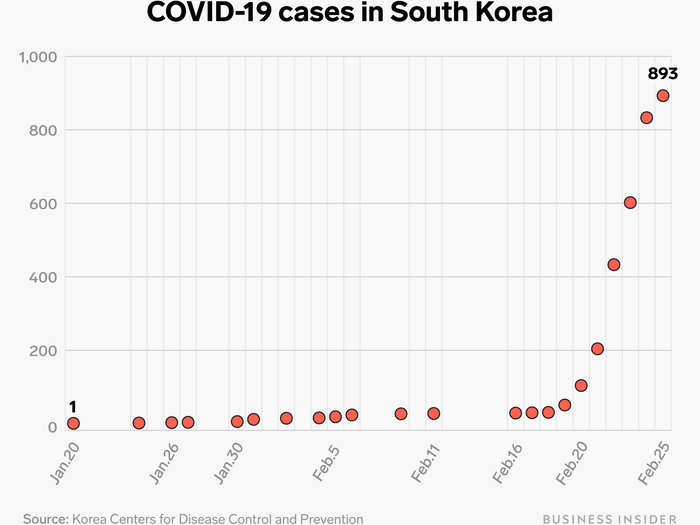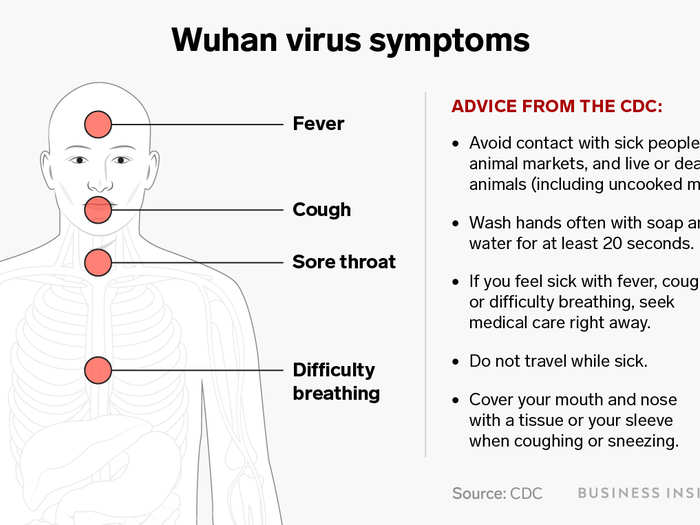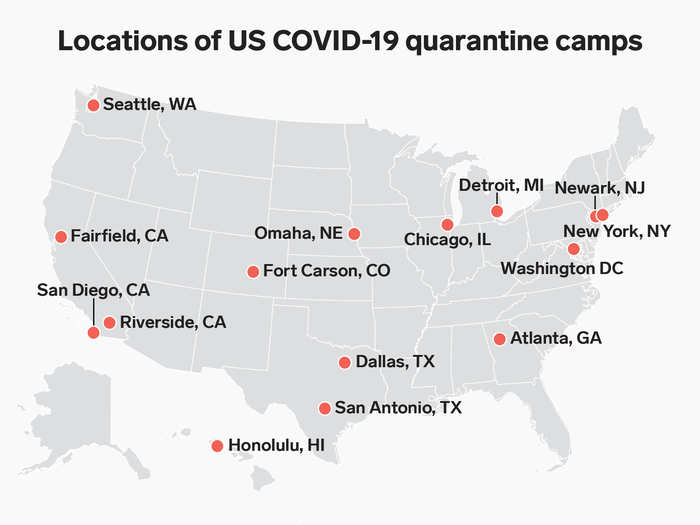- Home
- slideshows
- miscellaneous
- What to know about the coronavirus outbreak in 8 charts
What to know about the coronavirus outbreak in 8 charts
Where cases have been confirmed so far:

South Korea saw its first coronavirus case on January 20, and the total grew to 104 over the next month. In the last week, however, the number of cases in South Korea jumped by more than 800%.

The spike seems to have happened after a 61-year-old "super-spreader" infected 43 other members of a fringe religious group called the Shincheonji Church of Jesus. Worshippers were forbidden to wear face masks, the New York Times reported.
More than half of South Korea's total infected patients are either members of the religious group or had contact with a church member.
This chart shows the rate at which the novel coronavirus has spread.

The true number of infected people is probably higher than the official total. Academics from Imperial College London suggested in early February that only about one in 19 people infected with the virus were receiving a diagnosis.
More than 3,000 healthcare workers have been infected in China.
The total number of cases and deaths have far surpassed those of the SARS outbreak.

SARS killed 774 people and infected 8,098 between November 2002 and July 2003. The new coronavirus has killed more than three times that many people in eight weeks.
The virus' pneumonialike symptoms include fever and difficulty breathing.

According to the CDC, a person could be at risk if they have:
- Fever and symptoms of lower respiratory illness, such as coughing or difficulty breathing, after traveling to Wuhan or having close contact with someone who was ill and is now under investigation for the virus in the past two weeks.
- Fever or symptoms of lower respiratory illness after having close contact in the past two weeks with someone who's been confirmed to have the virus.
CDC officials said the virus' incubation period — how much time passes between when a patient gets infected and when their coronavirus test comes back positive — is believed to be range from two to 14 days.
The US has reported 57 coronavirus cases, including 43 repatriated citizens who were evacuated from Wuhan and from the quarantined Diamond Princess cruise ship that docked in Japan.

The risk in the US is still low, according to the CDC. However, Messonier said Americans should be prepared for the virus to spread in the US.
"The disruption of daily life might be severe," she added.
The Department of Defense and CDC have approved at least 15 US military bases as quarantine camps.

About 800 US citizens evacuated from Wuhan have been brought to some of these military bases and put under a mandatory two-week quarantine.
So far, about 400 of them have been released after testing negative for the virus.
"They have been watched more closely than anyone else in the United States at this point in time," Nancy Knight, director of the Division of Global Health Protection at the CDC, said in a briefing.
The US state department and CDC have issued travel warnings for countries affected by the coronavirus.

Currently, China and South Korea are both at Level 3, meaning the CDC recommends avoiding non-essential travel to those countries.
Read more about the novel coronavirus:
The US has confirmed 57 coronavirus cases. Here's what we know about all the US patients.
Popular Right Now
Popular Keywords
Advertisement